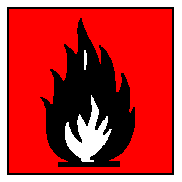International Chemical Safety Cards
| VINYL ACETATE (MONOMER) | ICSC: 0347 |
| VINYL ACETATE (MONOMER) Acetic acid ethenyl ester 1-Acetoxyethylene Acetic acid vinyl ester C4H6O2/CH3COOCH=CH2 Molecular mass: 86.1 CAS # 108-05-4 RTECS # AK0875000 ICSC # 0347 UN # 1301 (inhibited) EC # 607-023-00-0 |
 |
| TYPES OF HAZARD/ EXPOSURE |
ACUTE HAZARDS/ SYMPTOMS |
PREVENTION | FIRST AID/ FIRE FIGHTING |
| FIRE | Highly flammable. |
NO open flames, NO sparks,
and NO smoking. |
AFFF, alcohol-resistant
foam, powder, carbon dioxide. |
| EXPLOSION | Vapour/air mixtures are
explosive. |
Closed system, ventilation,
explosion-proof electrical equipment and lighting. Do NOT use compressed air for filling,
discharging, or handling. |
In case of fire: keep
drums, etc., cool by spraying with water. |
| EXPOSURE | |
PREVENT GENERATION OF
MISTS! |
|
| INHALATION | Cough. Shortness of
breath. Sore throat. |
Ventilation, local exhaust,
or breathing protection. |
Fresh air, rest.
Half-upright position. Refer for medical attention. |
| SKIN | Redness. Blisters. |
Protective gloves. |
Remove contaminated
clothes. Rinse skin with plenty of water or shower. |
| EYES | Redness. Pain. Minor burns.
|
Safety goggles. |
First rinse with plenty of
water for several minutes (remove contact lenses if easily possible), then take to a
doctor. |
| INGESTION | Drowsiness. Headache. |
Do not eat, drink, or smoke
during work. |
Rinse mouth. Give plenty of
water to drink. Refer for medical attention. |
| SPILLAGE DISPOSAL | STORAGE | PACKAGING & LABELLING | ||
| Collect leaking liquid in
sealable containers. Absorb remaining liquid in sand or inert absorbent and remove to safe
place. Do NOT wash away into sewer (extra personal protection: self-contained breathing
apparatus). |
Fireproof. Separated from
strong oxidants. Cool. Dry. Keep in the dark. Well closed. Store only if stabilized. |
F symbol R: 11 S: (2-)16-23-29-33 Note: D UN Hazard Class: 3 UN Packing Group: II |
||
| SEE IMPORTANT INFORMATION ON BACK | ||||
|
||||